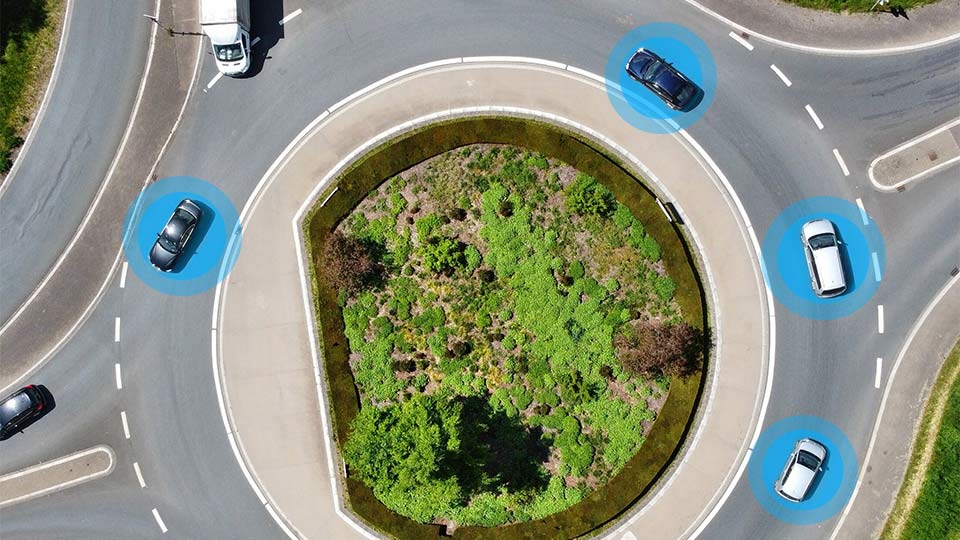
Partner for the rEVolution: How to develop the right electrification strategy, understand the market

Table of contents
A bright future ahead for EVs
As the UK rebuilds itself from the ongoing impacts of the COVID-19 pandemic, electric vehicles (EVs) will play a key role in decarbonising the economy and meeting air-quality targets. As businesses are responsible for purchasing the majority of new vehicles, fleet electrification could create the scale of demand needed to tip the balance in favour of the widespread adoption of EVs in the UK market.
Meanwhile, for fleet managers who have a mandate to reduce the environmental impact of their operations, transitioning to electric vehicles provides the greatest opportunity to achieve company goals for fleet sustainability.
This white paper looks at the current market conditions and drivers that will impact fleet managers in 2020 and beyond.
- What does the market look like in a post-COVID world?
- Which fleets are best suited to electrification?
- What are the common barriers to electrification?
- How can they be overcome?
The current state-of-play: The impact of COVID-19 on EV sales
In January 2020, 88% of the world’s largest fleets planned to purchase EVs within the following 12 months. However, since the COVID-19 pandemic hit, these numbers have shifted as corporate attention has been forced to deviate. In addition, the resulting lockdown from March through to June 2020 closed vehicle dealerships and showrooms, removing the main method by which new vehicles are sold in the UK. This significantly depressed new registrations of all vehicles from Q2 onwards.
Sales of EVs fared much better than ICE vehicles
An indirect impact of the pandemic was a broad shift in consumer preference, away from conventionally fuelled vehicles and towards those that are alternatively fuelled. This is reflected in the Department for Transport’s statistics for new vehicle registrations in Q2 2020. While diesel vehicle sales fell by 81% compared to the same quarter of 2019 and petrol fell by 72% over the same period, there was a 30% increase in the sales of ultra low emission vehicles (ULEVs). This also marked the first time ever that more new alternative fuel cars were registered than new diesel cars, with ULEVS making up 7.8% of all new registrations.
Figures from the Society of Motor Manufacturers and Traders (SMMT) show that YTD through to the end of September 2020, ICE car registrations fell by 45% compared to 2019, while electric vehicle sales (BEV and PHEV combined) increased by 127%. For the same period, pure-electric models accounted for 5.4% of all new car registrations, and when combined with PHEVs, their total market share reached 9%.
The fleet types best positioned to make the transition to electric
To date, light-duty fleets have most successfully incorporated EVs. Of those, EVs are best positioned to succeed in depot-based fleets, particularly last mile carriers and field service operations. The routes and driving patterns of these vehicles are generally predictable and many operate over only moderate distances.
Another benefit of depot-based operations is that vehicles return to base at the end of each day, where they can be plugged in and charged overnight, during low-cost energy tariff periods.
Utility and public sector fleets are equally well positioned to transition to electric, since their vehicles generally have duty cycles with low daily ranges and regular stops. These fleets are highly incentivised to go electric to support their public profile and to help them meet their organisation’s sustainability goals.
Leased corporate car fleets and grey fleets also make excellent candidates to incorporate EVs. The electric car market features an increasing number of EV models, and these vehicles rarely exceed the market range limitations. Employees choosing to purchase a pure electric vehicle currently benefit from paying no company car tax, making a noticeable improvement to take-home salaries, particularly for those paying higher tax rates.
Overall, fleets with high vehicle utilisation rates will be in the best position to make the transition to electric. With every electric mile savings are possible. Higher utilisation makes ‘fuel’ costs a greater proportion of the total cost of ownership (TCO) of the vehicle, significantly reducing the comparative cost of an EV compared to a conventionally powered vehicle.
Government initiatives to incentivise EVs
The government recently published a report on air pollution levels across the UK. The data revealed that 75% of cities still have illegal levels of air pollution. It is legally required to implement air quality plans to reduce concentrations of these pollutants.
With road transportation in focus, there are three initiatives that will impact the rate of EV adoption amongst fleets:
- EV purchase incentives
- Clean Air Zones
- Tax incentives .
Electric vehicle purchase incentives
As part of its Road to Zero strategy to reduce emissions, the UK government has set a target for all new cars and vans to be effectively zero emission by 2040. To incentivise this transition, the government operates a plug-in car and van grant scheme.
The scheme pays for 20% of the purchase fee for approved electric or hybrid vans, up to a maximum of £8,000. These vehicles have CO2 emissions of less than 75g/km and can travel at least 10 miles without any emissions.
The scheme also pays for 35% of the purchase price of new electric cars, up to a maximum of £3,000. Approved vehicles have CO2 emissions of less than 50g/km, a purchase price under £50,000, and can travel at least 70 miles without any emissions.
While no official end date has yet been tabled, the Department of Transport intends to phase out this grant. Funds would likely instead be invested in expanding public charging infrastructure to make it easier for electric vehicle owners to charge on the road.
Introduction of Clean Air Zones
Many van fleet managers cite the introduction of Clean Air Zones (CAZs) as their primary driver to transition to electric. Over 60 local authorities are currently considering a CAZ, or are under notice from the government to comply with air quality standards within the next three years. However, the COVID-19 pandemic has pushed back some scheduled start dates until 2021/22.
The only operational CAZ that encompasses all vehicle types is the ultra-low emission zone (ULEZ) in Central London. The ULEZ currently covers the same geographic area as the existing Congestion Charge zone, but it remains scheduled to be extended to the area bounded by the South and North Circular roads in October 2021.
Two small Zero Emission Zones (ZEZs) are in operation in Islington and Hackney, and a third is due to be established in the City of London.
Glasgow has also been operating a LEZ for service buses since December 2018. Phase 2, still currently scheduled for December 2022 will extend the zone to cover all vehicles.
Oxford intends to become the UK’s first zero-emission city by 2035. The first phase ZEZ will apply a charge to all petrol and diesel vehicles entering the city centre. This is now scheduled for summer 2021, which is a COVID-19-enforced delay from the original date of December 2020.
Scotland plans to roll out LEZs in Edinburgh, Dundee and Aberdeen by 2022.
And, most recently, Bath and Birmingham have confirmed a CAZ for March and June 2021 respectively.
Company vehicle tax breaks for EVs
Company car tax, otherwise known as benefit-in-kind tax (BIK), is calculated based on an employee’s earnings, the vehicle’s P11D value, and its tailpipe emissions of CO2. As part of the government’s review of vehicle taxes, it has mandated that company car drivers who choose a pure electric vehicle will not have to pay any BIK tax in 2020/21. The tax will then increase to 1% in 2021/22 and 2% in 2022/23.
The rate will apply to all zero emissions vehicles registered before or after 6 April 2020, and to vehicles with CO2 emissions of 1-50g/km and a pure electric range of over 130 miles if they are registered after 6 April 2020.
Company vehicles registered before 6 April 2020, with CO2 emissions of 1-50g/km and a pure electric range of over 130 miles will benefit from a static BIK rate of 2% from 2020/21, through until 2022/23.
As BIK can make a large difference to an individual’s monthly wages, the government hopes that this tax break will significantly increase the adoption of fully electric vehicles among fleets.
Barriers to electrification
There are still some remaining hurdles that fleet managers perceive as they consider transitioning their vehicles to electric, although all of these are now easily navigable.
Range anxiety
“Range anxiety”, the concern that the electric vehicle won’t have sufficient charge to complete its duty, was a familiar concern when EVs first entered the market. However, thanks to improvements in battery chemistry and technology, the real-world range of many light-duty EVs is now over 200 miles, safely enough to complete most duty cycles.
The new models of electric vans have real-world ranges of over 100 miles, depending on battery size, making them suitable for many duty cycles. By considering the total daily mileage of a vehicle before selecting its EV replacement, range should never be a problem. And with electric vehicle telematics systems, fleet operators can now not only optimise routes but also have visibility of vehicle battery state-of-charge, that allow you to schedule when vehicles need to charge.
Customer choice
Most vehicle manufacturers offer a limited selection of electric vehicle models compared to their conventionally fuelled counterparts. Furthermore, many EVs have long waiting times due to a lack of manufacturing capacity.
Now that many governments are planning to restrict or ban the sales of ICE vehicles, and the scale of market desire has been proven, many vehicle manufacturers are starting to invest more heavily in EV production. A growing number of manufacturers have announced they are transitioning their fleet entirely, or significantly, to electric or hybrid electric in the near future.
Battery technology
Some uncertainty remains around how EV batteries will perform by the time the vehicles enter the second- or third-hand market.
There are a number of protections built into EV batteries to prevent rapid degradation, and most manufacturers now offer a warranty of between 5 and 8 years, with experts predicting that the average battery will last between 10 and 20 years before needing replacing.
Similarly, Geotab has developed a public-facing tool to help fleet operators understand the battery degradation impact based on real-life data.
Managing a mixed fleet
Since most fleet managers are likely to make a gradual transition to electric, this leaves them with a potentially challenging middle ground, where they are running some conventional, and some electric vehicles.
This can present hurdles when it comes to monitoring and reporting, which can be circumvented by choosing a telematics platform that spans across all drivetrains. Managers can then compare fuel-efficiency (equivalent) and other performance indicators across the entire fleet, while also monitoring EV-specific metrics such as battery state of charge all in one platform.
Total cost of ownership
When considering the business case of electric, fleet managers should look to these key figures to calculate the entire lifecycle costs of purchasing a vehicle, known as the Total Cost of Ownership (TCO):
- Initial purchase cost (minus any available government grants)
- Cost of running and maintaining the vehicle
- Tax and insurance
- Potential resale value (or the business lease costs)
Most electric vehicles that are well utilised have a lower TCO than their conventional counterparts, despite their initial higher price tag.
Fleets require a trusted advisor to move to EVs
If fleet managers are to maximise the opportunity of electrification, they need to make some critical decisions regarding how they select, fund, charge and manage these vehicles. With so many considerations to take into account, many fleets require a trusted advisor to help them get to grips with the new landscape.
As the transition begins, assistance is required to understand the EV market, so that informed decisions can be made on the EVs that will best fit the duty cycles and fleet demands.
Fleet resources for electrification
Geotab’s EV Suitability Assessment (EVSA) leverages the world’s largest EV real-world range dataset to ensure the right vehicles are selected for fleet operation.
As the fleet manager incorporates these EVs and manage either a full electric, or a mixed fleet of ICE and electric vehicles, then the reporting platform must be able to support all makes, models and drivetrains, and be able to expand to accommodate other EVs as they enter the market. Geotab’s fleet management platform offers the widest make / model support of all EVs, from light to heavy duty, to support the fleet today and into tomorrow.
For electrification consultation, fleets need to understand the whole process, from choosing the right vehicles, and having operational visibility of the entire fleet can begin that transition to electric, to implementing the right charging infrastructure for the fleet.
To learn more about fleet sustainability and for advice on how to electrify, visit: https://www.geotab.com/uk/fleet-management-solutions/electric-vehicles/
About Geotab
Geotab is a global leader in connected vehicle and asset solutions, empowering fleet efficiency and management. We leverage advanced data analytics and AI to transform fleet performance, safety, and sustainability, reducing cost and driving efficiency. Backed by top data scientists and engineers, we serve over 55,000 global customers, processing 80 billion data points daily from more than 4.7 million vehicle subscriptions. Geotab is trusted by Fortune 500 organisations, mid-sized fleets, and the largest public sector fleets in the world, including the US Federal Government. Committed to data security and privacy, we hold FIPS 140-3 and FedRAMP authorisations. Our open platform, ecosystem of outstanding partners, and Marketplace deliver hundreds of fleet-ready third-party solutions. This year, we're celebrating 25 years of innovation. Learn more at www.geotab.com/uk, and follow us on LinkedIn or visit our blog.
© 2025 Geotab Inc.All Rights Reserved.
This white paper is intended to provide information and encourage discussion on topics of interest to the telematics community. Geotab is not providing technical, professional or legal advice through this white paper. While every effort has been made to ensure that the information in this white paper is timely and accurate, errors and omissions may occur, and the information presented here may become out-of-date with the passage of time.
Recent News


In the Driver’s Seat: Accelerating ROI Through Trusted Data Insights
July 12, 2024


Profitable sustainability: The potential of European fleet electrification
September 21, 2022
